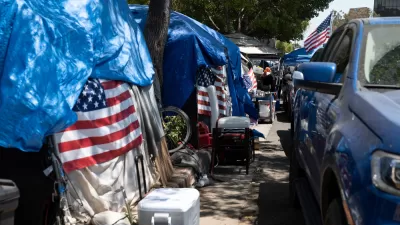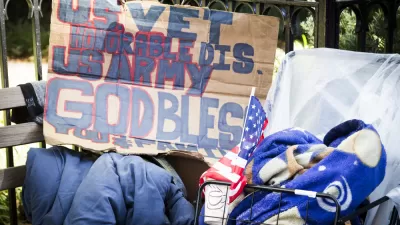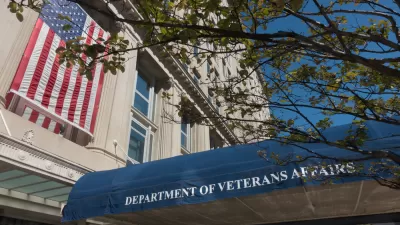We are so close to this goal. We should not change our focus before we meet it.
By Elisha Harig-Blaine
Since the numbers for the 2013 Point-in-Time (PIT) survey [pdf] conducted for the U.S. Dept. of Housing and Urban Development (HUD) were released, there has been much discussion of the reduction in the number of homeless veterans. In 2014 there was a further decrease, totaling a 33 percent reduction since 2010. There is no debating that the progress seen in this subpopulation is cause for celebration. However, as the federal goal of ending veteran homelessness by 2015 nears, there are some who question whether communities should be focusing on a single subpopulation at all, and if so, whether veterans are the correct subpopulation. While well intentioned, these debates are time-consuming and distract communities from focusing on what is a monumental opportunity to prove that homelessness is a solvable problem.
For decades, advocates have noted that limited resources allowed no real opportunity for a substantive decline in homelessness. As a result, our nation’s response to homelessness was to manage the issue with shelters and transitional housing. However, even after the introduction of the Housing First model and supportive housing strategies, the homeless population did not decline. An overall lack of affordable housing, an insufficient number of housing vouchers, declining investment in public housing, and no consistent resources for prevention or rapid re-housing have caused our homeless population to increase.
To make progress, the United States Interagency Council on Homelessness's (USICH) Opening Doors plan identified priority subpopulations. In some communities, there is debate over where families or veterans should be prioritized. Some advocates have argued that focusing on families allows the impact on children to be mitigated as quickly as possible, as reducing the length of time a child lives without a home is proven to increase health and educational outcomes. While no one disputes the impact of housing on a child’s life, failing to focus on the homeless veteran subpopulation would be...
FULL STORY: How Can We End Homelessness? Let’s Start—and Finish—With Veterans

Alabama: Trump Terminates Settlements for Black Communities Harmed By Raw Sewage
Trump deemed the landmark civil rights agreement “illegal DEI and environmental justice policy.”

Study: Maui’s Plan to Convert Vacation Rentals to Long-Term Housing Could Cause Nearly $1 Billion Economic Loss
The plan would reduce visitor accommodation by 25% resulting in 1,900 jobs lost.

Why Should We Subsidize Public Transportation?
Many public transit agencies face financial stress due to rising costs, declining fare revenue, and declining subsidies. Transit advocates must provide a strong business case for increasing public transit funding.

Wind Energy on the Rise Despite Federal Policy Reversal
The Trump administration is revoking federal support for renewable energy, but demand for new projects continues unabated.

Passengers Flock to Caltrain After Electrification
The new electric trains are running faster and more reliably, leading to strong ridership growth on the Bay Area rail system.

Texas Churches Rally Behind ‘Yes in God’s Back Yard’ Legislation
Religious leaders want the state to reduce zoning regulations to streamline leasing church-owned land to housing developers.
Urban Design for Planners 1: Software Tools
This six-course series explores essential urban design concepts using open source software and equips planners with the tools they need to participate fully in the urban design process.
Planning for Universal Design
Learn the tools for implementing Universal Design in planning regulations.
Caltrans
Smith Gee Studio
Institute for Housing and Urban Development Studies (IHS)
City of Grandview
Harvard GSD Executive Education
Toledo-Lucas County Plan Commissions
Salt Lake City
NYU Wagner Graduate School of Public Service





























